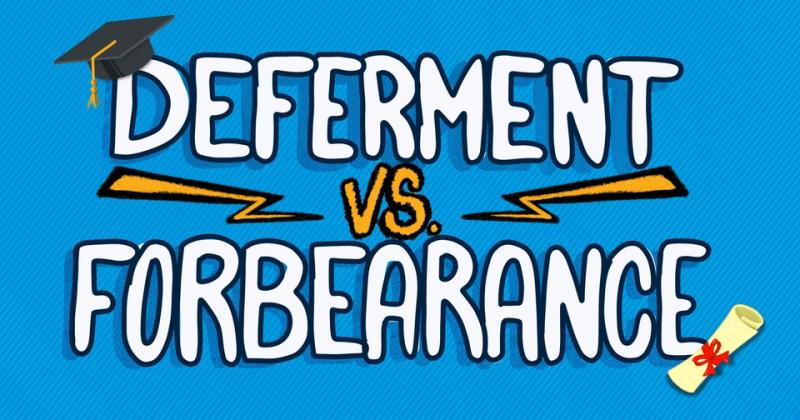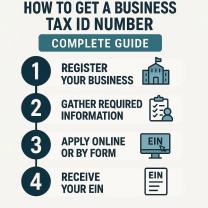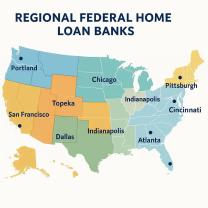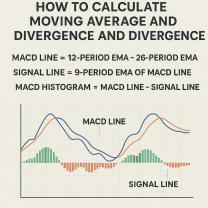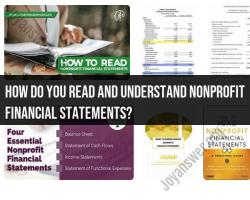What is the difference between a deferment and a forbearance?
Both deferment and forbearance are options that allow borrowers to temporarily postpone or reduce their student loan payments. However, there are key differences between the two:
Deferment:
- Eligibility: Deferment is typically granted based on specific criteria, such as financial hardship, enrollment in school at least half-time, unemployment, or military service. For federal student loans, you must meet the eligibility requirements outlined in the federal student loan program.
- Interest Subsidy: Depending on the type of loan, the government may subsidize the interest during the deferment period. For example, with subsidized federal loans, the government pays the interest on the loan during the deferment period.
- Postponement Period: During a deferment, you are generally not required to make payments on the principal or interest of your loan. The length of the deferment period depends on the specific circumstances and type of loan.
Forbearance:
- Eligibility: Forbearance is usually granted at the discretion of the loan servicer, and it may be granted for various reasons, including financial hardship, medical expenses, or other personal reasons. Unlike deferment, forbearance is not limited by specific eligibility criteria.
- Interest Accrual: Unlike deferment, interest typically accrues on all types of loans during forbearance. This means that even if you are not making payments, interest continues to accumulate and may be capitalized (added to the principal balance) at the end of the forbearance period.
- Postponement Period: Similar to deferment, during a forbearance, you can temporarily reduce or postpone your loan payments. The length of the forbearance period depends on the specific circumstances and type of loan.
It's important to note that both deferment and forbearance are temporary solutions, and interest accrual during these periods may result in higher overall loan costs. Borrowers should carefully consider the implications of each option and explore alternative repayment plans or forgiveness programs that may better suit their financial situation in the long term.
If you are experiencing financial difficulties and considering deferment or forbearance, it is advisable to contact your loan servicer to discuss your options and determine the best course of action based on your individual circumstances. Additionally, for federal student loans, there are specific procedures and application processes to follow when requesting deferment or forbearance.
Deferment vs. Forbearance: Understanding the Key Differences
While both deferment and forbearance offer temporary relief from making loan payments, they have distinct characteristics and implications for borrowers. Here's a breakdown of the key differences:
1. Definition:
- Deferment: A period during which loan payments are postponed or temporarily reduced. During this time, interest usually does not accrue on subsidized federal loans, but it does on unsubsidized federal loans and most private loans.
- Forbearance: A period during which loan payments are postponed or reduced, but interest continues to accrue on all loan types.
2. Duration:
- Deferment: Typically lasts for a specific period, such as for military service, economic hardship, or while enrolled at least half-time in an eligible school. The maximum deferment period can vary depending on the loan type and program.
- Forbearance: Can be granted for a shorter or longer period depending on the borrower's situation and the lender's policies.
3. Interest accrual:
- Deferment: On subsidized federal loans, interest does not accrue during the deferment period. However, for unsubsidized federal loans and most private loans, interest does accrue and is capitalized (added to the loan principal) at the end of the deferment period.
- Forbearance: Interest accrues on all loan types during the forbearance period and is added to the loan principal, increasing the total amount owed.
4. Eligibility:
- Deferment: Eligibility criteria are generally more specific and tied to certain qualifying events like military service, medical reasons, or economic hardship.
- Forbearance: Generally, there are fewer restrictions on eligibility, and borrowers may qualify based on a broader range of financial difficulties or hardship situations.
5. Impact on loan repayment:
- Deferment: While payments are paused, the loan term might not be extended, meaning borrowers need to make larger or more frequent payments after the deferment period to stay on track.
- Forbearance: Since interest continues to accrue, the loan balance will increase during the forbearance period, leading to higher monthly payments or a longer repayment term after the forbearance ends.
6. Implications for borrowers:
- Deferment: A good option for borrowers facing temporary hardship who can afford to resume payments after the deferment period.
- Forbearance: Can offer temporary relief from financial stress, but borrowers should be aware of the increased interest charges and the potential impact on their long-term loan repayment plans.
7. Choosing between deferment and forbearance:
The best option depends on your specific situation and financial goals. Consider the duration of your hardship, the interest accrual implications, and your ability to resume payments after the relief period. Consulting with your loan servicer can help you determine which option best suits your needs.
